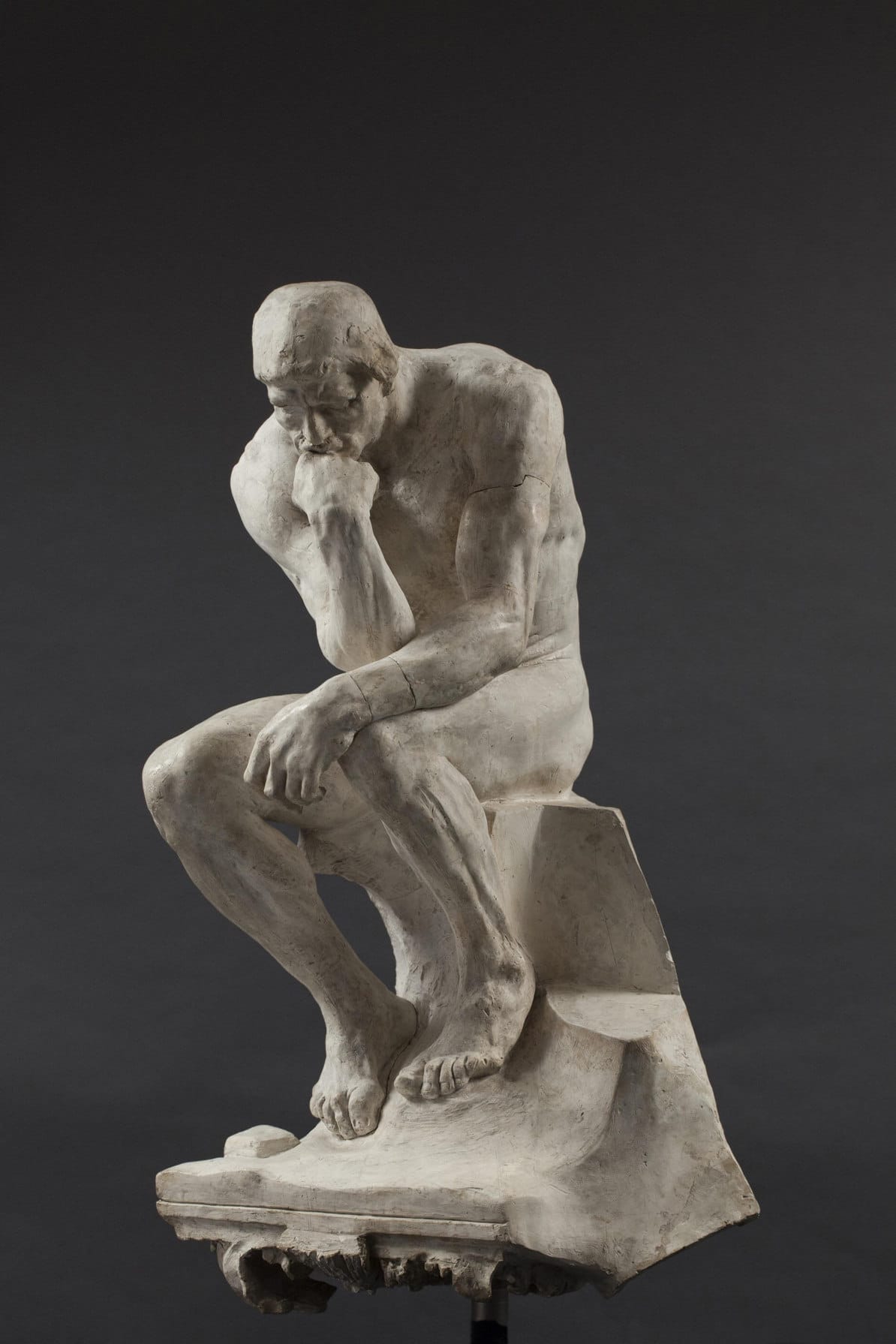Hell According to Rodin
OCT.11.2017 ──────── JAN.28.2018

Le Penseur, sur élément de chapiteau, 1881-1888 (detalle)
Musée Rodin, París. S.03469
© agence photographique du musee Rodin – Pauline Hisbacq
The exhibition Hell according to Rodin is produced by Fundación MAPFRE and the Musée Rodin of Paris which has made exceptional loans.

The Thinker: Originally crowning The Gates of Hell, The Thinker probably represented Minos, a judge who sentenced the damned to one of the circles of hell according to their sins. But Rodin did not hesitate in changing this interpretation, converting him into an image of Dante the poet, mulling over his work and, by extension, turning him into an allegorical self-portrait. Enlarged in 1903, it became the sculptor’s most iconic work, completing his metamorphosis as the representation of a man who concentrates his whole body into the act of thinking.
The Kiss: In one of the most famous passages of the Divine Comedy, Dante is moved when listening to Francesca da Rimini tell the story about her forbidden love for Paolo Malatesta. Rodin rejects the picturesque, and creates an idealized image of a couple exchanging their first lovers’ kiss. Rodin decided not to include this group in his Gates of Hell, almost certainly because it was too big and too idyllic, but it didn’t escape the attention of French State, which commissioned a large marble version of the work in 1888.
A hinge between two centuries: Although Rodin’s Gates depicts hell as an intimate torment that can be classed as being part of the end-of-the-century ambience of symbolism, his work also marked the start of modernity in sculpture, employing concepts such as the value of the unfinished, multiplication and fragmentation. For Rodin The Gates of Hell was an authentic creative laboratory, thus making it one of the most iconic sculptural works of the 19th century.
Coming soon




